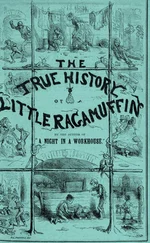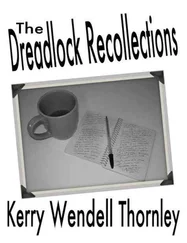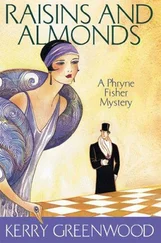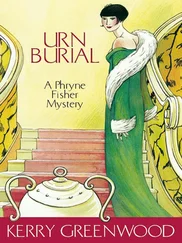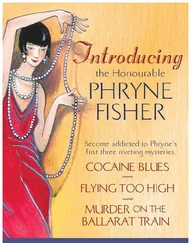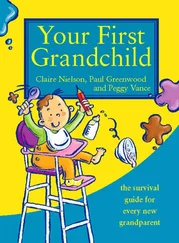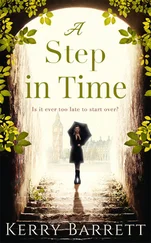Kerry Greenwood - Tamam Shud
Здесь есть возможность читать онлайн «Kerry Greenwood - Tamam Shud» весь текст электронной книги совершенно бесплатно (целиком полную версию без сокращений). В некоторых случаях можно слушать аудио, скачать через торрент в формате fb2 и присутствует краткое содержание. Город: Sydney, Год выпуска: 2012, ISBN: 2012, Издательство: NewSouth, Жанр: Детектив, Прочая документальная литература, на английском языке. Описание произведения, (предисловие) а так же отзывы посетителей доступны на портале библиотеки ЛибКат.
- Название:Tamam Shud
- Автор:
- Издательство:NewSouth
- Жанр:
- Год:2012
- Город:Sydney
- ISBN:978-1-742-23350-5
- Рейтинг книги:3 / 5. Голосов: 1
-
Избранное:Добавить в избранное
- Отзывы:
-
Ваша оценка:
- 60
- 1
- 2
- 3
- 4
- 5
Tamam Shud: краткое содержание, описание и аннотация
Предлагаем к чтению аннотацию, описание, краткое содержание или предисловие (зависит от того, что написал сам автор книги «Tamam Shud»). Если вы не нашли необходимую информацию о книге — напишите в комментариях, мы постараемся отыскать её.
Tamam Shud — читать онлайн бесплатно полную книгу (весь текст) целиком
Ниже представлен текст книги, разбитый по страницам. Система сохранения места последней прочитанной страницы, позволяет с удобством читать онлайн бесплатно книгу «Tamam Shud», без необходимости каждый раз заново искать на чём Вы остановились. Поставьте закладку, и сможете в любой момент перейти на страницу, на которой закончили чтение.
Интервал:
Закладка:
Not so our dead man. He had envelopes but no stamps, writing paper or pen. No address book. He had buttons but no coins except those of the realm and no photo of Mum or Mr Waggles. The Rubaiyat was his only extraneous possession, probably an expensive one. Which he treated with such disdain that he – or someone else – wrote telephone numbers and a code in pencil on the end page. The code is as follows:
W (or possibly M) RGOABABD
MLIAOI
WTBIMPANETP
MLIAB  AIAIQC
AIAIQC
ITTMTSAMSTGAB
The second line has been struck out and is repeated in the fourth line. There is an X over the last O, which may be significant, but no one has been able to break the code and determine its significance.
Book codes usually consist of page and word numbers and they are very hard to break because you have no idea what the letters or numbers refer to, unless you have the book in your hand. That is why they were so popular with spies in the fifties and that is why, lacking the book, they still cannot be broken, even with the spiffy technology that is now available. Extensive efforts have been made by Adelaide University to break the Tamam Shud code, using as a base the idea that it is a one-time pad encryption algorithm, but they need a copy of the first edition of The Rubaiyat and so far have not been able to find one. I would suggest they enquire at the six copyright deposit libraries in Britain, established since 1610 – The British Library in London, Cambridge University, the Bodleian, and the National libraries of Scotland, Wales and Dublin – but they have probably tried that.
The retired detective Gerald Feltus, who has written an excellent book on Somerton Man, believes that the code is a series of capitals which refer to the first letters of words, in the same way as SWALK means ‘sealed with a loving kiss’. For example, the final line of the code could mean ‘It’s Time To Move To South Australia Moseley Street’. When questioned by the media, Mr Feltus did not elaborate, although perhaps he will change his mind in future, if everyone who reads this book contacts him on his website and implores him to reveal the rest of the message.
I can demonstrate the advantages and disadvantages of a code made from first letters by replicating the To Do list I wrote this morning. It goes:
p/u dr cl
ss
t/a 3MBS
alf
b pp
AA batt
This means ‘Pick up drycleaning, sesame seeds, telephone interview.’ (T/a is lawyer’s shorthand for a telephone attendance.) Less obviously, ‘b pp’ is baking paper, ‘alf’ is alfoil and ‘AA bat’ means AA batteries. If I made my list into a Somerton Man code, it might read pudrcl ssta3 mbs alfbpp. And if I then ran it through an alphabet substitution, where a = k, it would read zkthiijk3crikbvrzz, which makes no sense at all. An alert code reader might notice the number of z’s and decide it was an alphabet substitution but that would just take her back to the original coded version.
Now, while you might be able to guess that p/u is pick up and dr cl is drycleaning, it is my own private knowledge that tells me that ss is sesame seeds, not sweet sauce or super sugar or swimming snakes or any other combination of things starting with ‘s’. The same goes for b pp and alf. This kind of shorthand is so personal as to be unbreakable. My friends wouldn’t be able to read it, unless I had previously sent them a list of my code words, and informed them that ss was only ever going to mean sesame seeds, which rather cuts down its use as a method of communication. On the other hand, it is only meant to remind me that I have run out of some household goods, whereas Somerton Man’s code may have had a more public significance.
Internet and text messages have made us aware of standard meanings for initials. I particularly like the phrase KTHXBAI which means ‘okay, thanks, goodbye’. New variations appear every day, a new generation of ROTFL and IMHO, not to mention new and imaginative spellings like Sk8r, which cut down the strain on the thumbs. Concerning the Somerton Man case, we might well say WTF? Frequency analysis will not reveal any meaning in a book-based code but if M always means the same word in the Tamam Shud code, why is it repeated four times – unless, perhaps, it means ‘help!’ On the evidence before us, it seems that this code must be the kind where the sender and receiver use a code book with agreed meanings for each letter or combination. And lacking the code book, this kind of code cannot be cracked.
Meanwhile, it is time to remind you that there was a telephone number pencilled on the back page of Somerton Man’s Rubaiyat , as well as a code. The telephone number was unlisted and belonged to a nurse called Teresa Powell or Johnson. (There’s that Johnson default setting again.) She lived in Moseley Street, Glenelg, just above Somerton Beach. And here the story gets very interesting.
The police questioned Teresa, who said she was not at home on 30 November but her neighbour mentioned that a strange man had called at the house. When Teresa was shown the body cast of Somerton Man, the police officer who exhibited it said ‘she was completely taken aback, to the point of giving the appearance that she was about to faint’. An odd reaction, perhaps. Nurses are, regrettably, used to death and Somerton Man’s face had been extensively plastered across the newspapers. Teresa must have already known that he was dead. If she knew him at all, that is.
When asked about the phone number in The Rubaiyat , she volunteered that she had once owned a copy while she was working at the Royal North Shore Hospital in Sydney, but in 1945 she had given it to Alfred Boxall, who was a soldier. This, as the alert reader will have noticed, is not an answer to the question. But she also said that the body cast was not of anyone she knew. The police decided to find Alf Boxall, hoping, I expect, that this mystery would finally be marked ‘closed’. But Boxall was not Somerton Man. He was alive and well, living in Randwick and working in bus maintenance. Boxall was unable to identify Somerton Man and what’s more, he produced his copy of The Rubaiyat , complete with its last words, ‘Tamam Shud’. The copy given to him by Teresa was the 1924 Sydney edition. In the front she had written what sounds to me like an invitation to begin or continue an affair, addressed to a lover.
Indeed, indeed, Repentance oft before
I swore – but was I sober when I swore?
And then and then came Spring, and Rose-in-hand
My thread-bare Penitence a-pieces tore.
The police seemed to have read it in the same way as I do. At any rate, when Teresa pleaded that she was now married and such exposure would damage her reputation, the police acceded to her plea that they shouldn’t allow her name to be publicly known. She was known as ‘Jestyn’, which was the name by which she signed Alf Boxall’s copy of The Rubaiyat until her real name was accidently disclosed years later. Now we know her name but since she and her son and her husband and Alf Boxall are all dead, it probably doesn’t help all that much.
Alf Boxall reported that he had given The Rubaiyat to his wife in June 1945, which argues extreme brazen effrontery, complete innocence or something even odder. Mr Boxall said he owned a copy with Jestyn’s verse in the front but Mrs Boxall showed the police a Rubaiyat with no writing in it at all. Which seems to mean that Mrs Boxall had been given a clean copy (she said she’d had it since Christmas 1944) and that Mr Boxall’s inscribed copy was still in the bookcase. There were a lot of copies of The Rubaiyat around at the time but two in one household seems extreme. Someone is fibbing, although it might be no more than the standard marital covering up of a harmless flirtation. When Mr Boxall was interviewed in 1978 by ABC TV, he insisted that Jestyn was just one of a group of nurses with whom he and his mates had the occasional swift snort when they could get away from the hospital but it seems clear that he singled her out from the group, at least to some extent.
Читать дальшеИнтервал:
Закладка:
Похожие книги на «Tamam Shud»
Представляем Вашему вниманию похожие книги на «Tamam Shud» списком для выбора. Мы отобрали схожую по названию и смыслу литературу в надежде предоставить читателям больше вариантов отыскать новые, интересные, ещё непрочитанные произведения.
Обсуждение, отзывы о книге «Tamam Shud» и просто собственные мнения читателей. Оставьте ваши комментарии, напишите, что Вы думаете о произведении, его смысле или главных героях. Укажите что конкретно понравилось, а что нет, и почему Вы так считаете.

